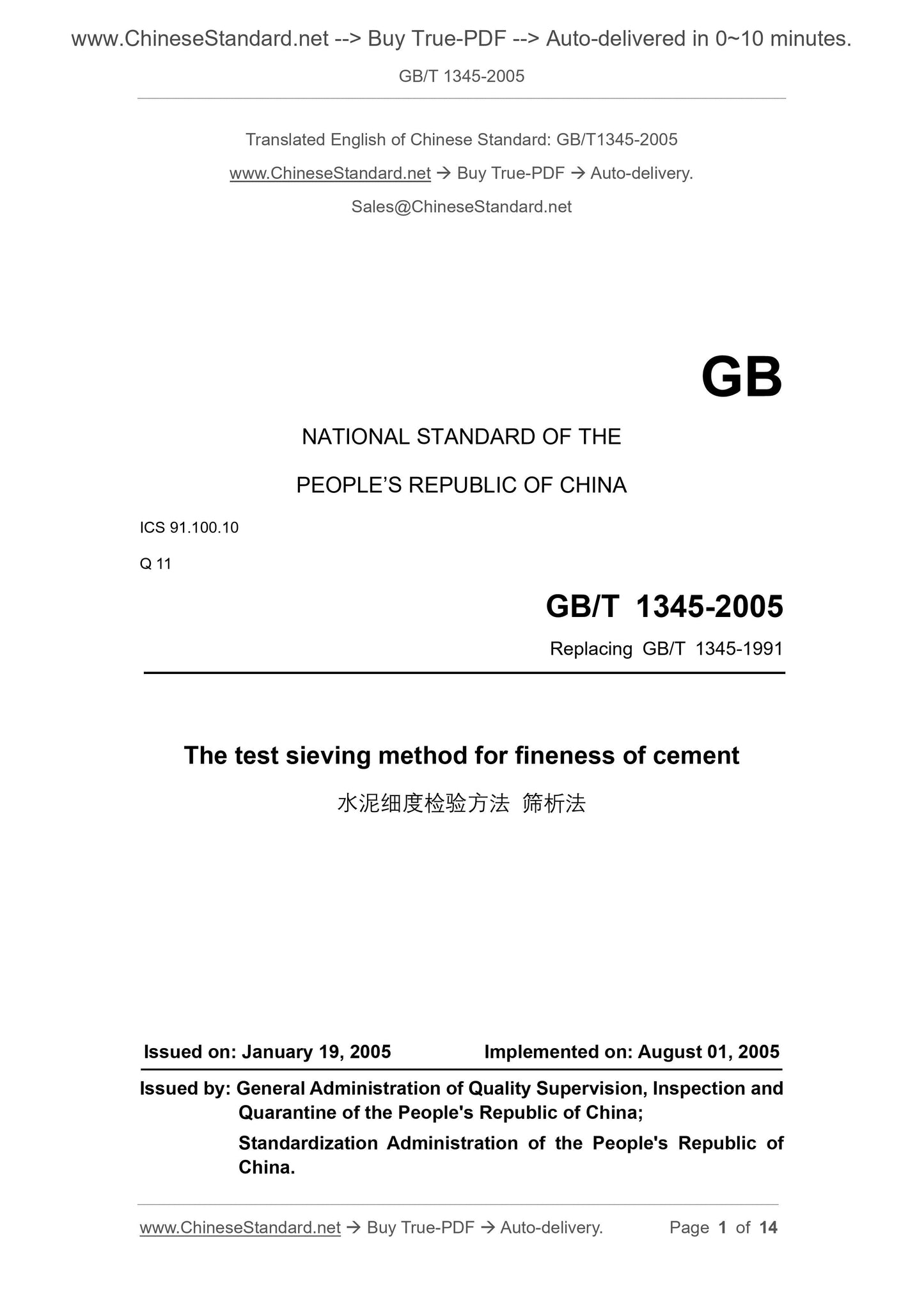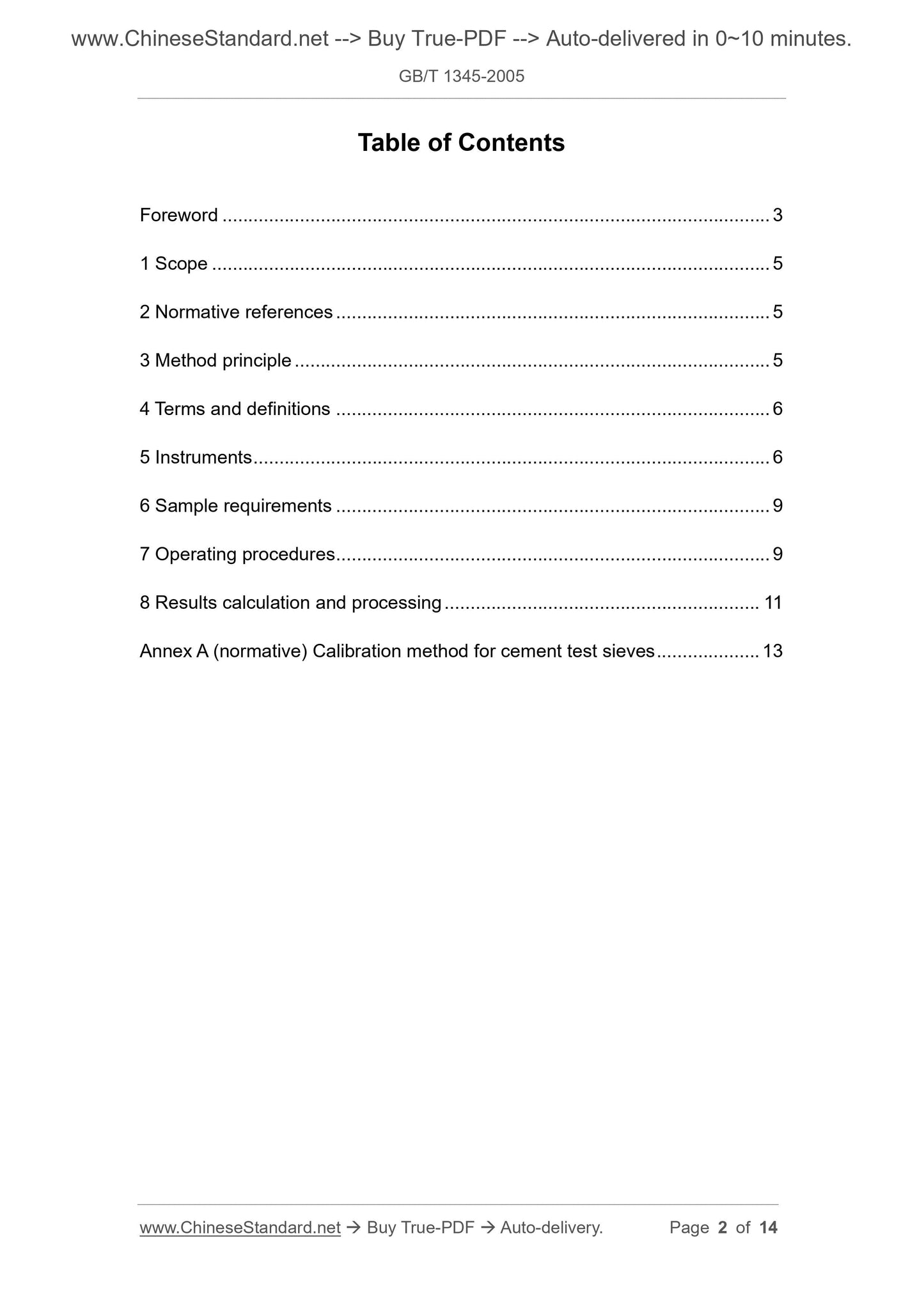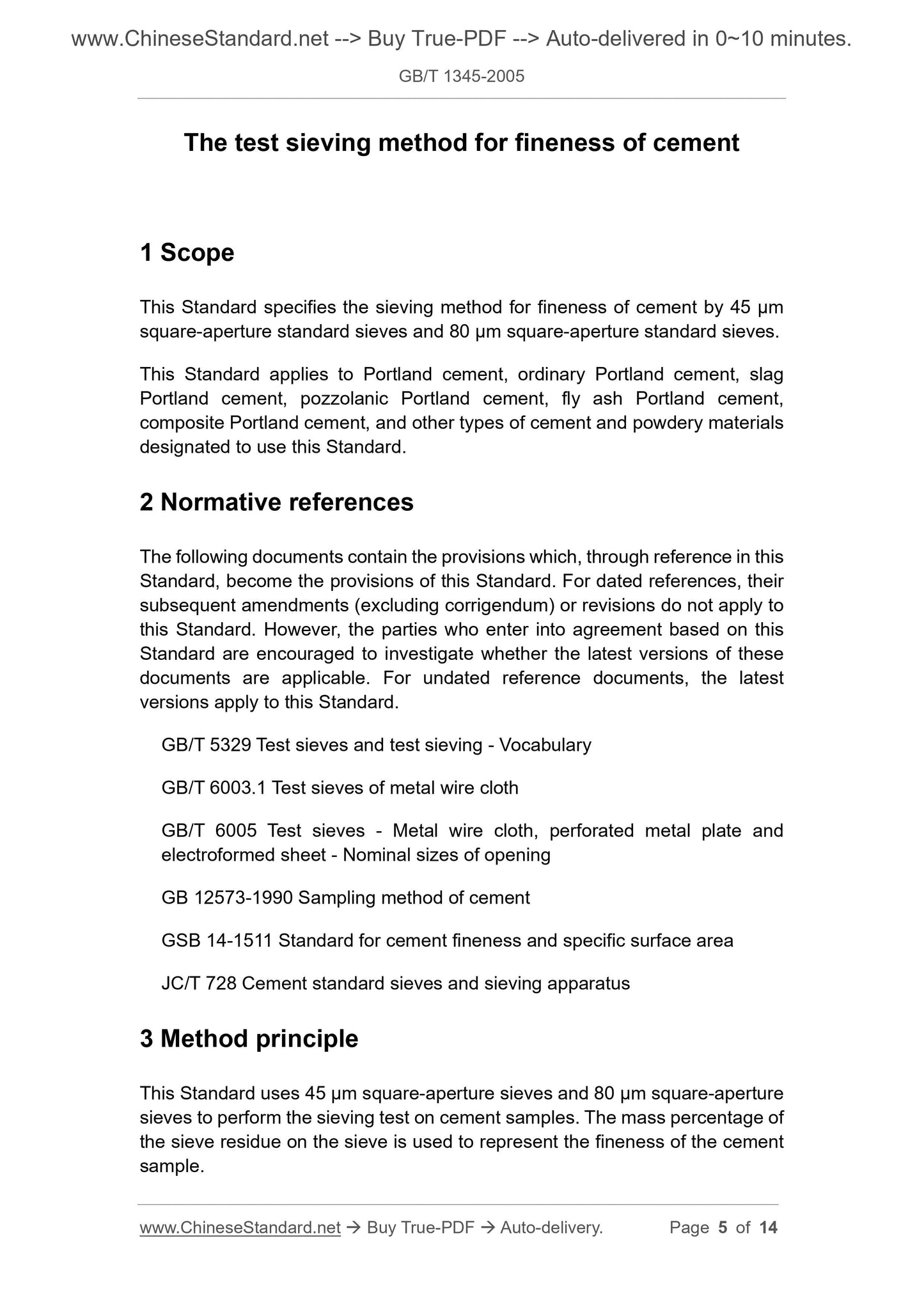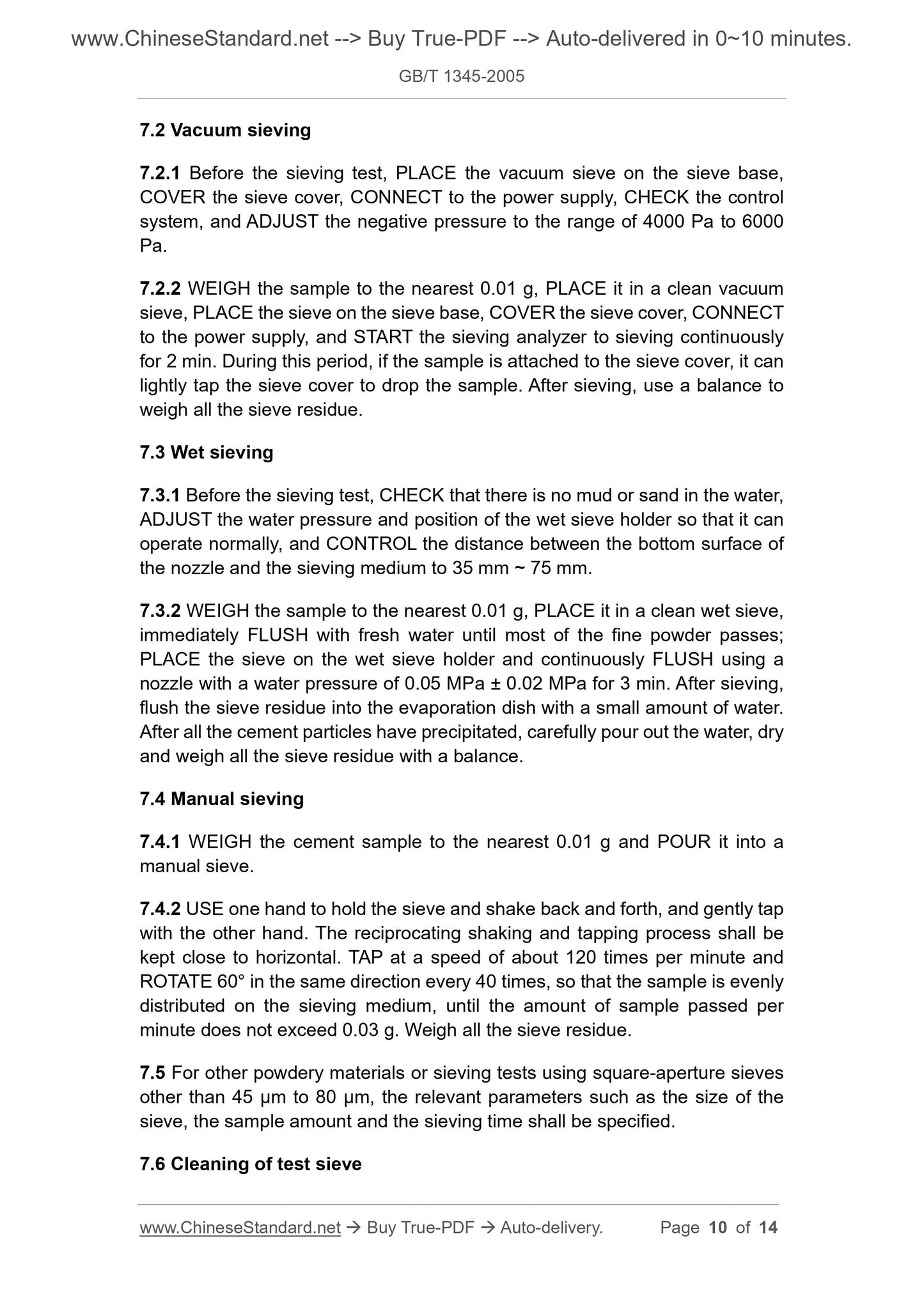1
/
of
5
www.ChineseStandard.us -- Field Test Asia Pte. Ltd.
GB/T 1345-2005 English PDF (GB/T1345-2005)
GB/T 1345-2005 English PDF (GB/T1345-2005)
Regular price
$70.00
Regular price
Sale price
$70.00
Unit price
/
per
Shipping calculated at checkout.
Couldn't load pickup availability
GB/T 1345-2005: The test sieving method for fineness of cement
Delivery: 9 seconds. Download (and Email) true-PDF + Invoice.Get Quotation: Click GB/T 1345-2005 (Self-service in 1-minute)
Newer / historical versions: GB/T 1345-2005
Preview True-PDF
Scope
This Standard specifies the sieving method for fineness of cement by 45 μmsquare-aperture standard sieves and 80 μm square-aperture standard sieves.
This Standard applies to Portland cement, ordinary Portland cement, slag
Portland cement, pozzolanic Portland cement, fly ash Portland cement,
composite Portland cement, and other types of cement and powdery materials
designated to use this Standard.
Basic Data
| Standard ID | GB/T 1345-2005 (GB/T1345-2005) |
| Description (Translated English) | The test sieving method for fineness of cement |
| Sector / Industry | National Standard (Recommended) |
| Classification of Chinese Standard | Q11 |
| Classification of International Standard | 91.100.10 |
| Word Count Estimation | 9,999 |
| Date of Issue | 2005-01-19 |
| Date of Implementation | 2005-08-01 |
| Older Standard (superseded by this standard) | GB/T 1345-1991 |
| Quoted Standard | GB/T 5329; GB/T 6003.1; GB/T 6005; GB 12573-1990; GSB 14-1511; JC/T 728 |
| Regulation (derived from) | Announcement of Newly Approved National Standards No. 2, 2005 (No. 76 overall) |
| Issuing agency(ies) | General Administration of Quality Supervision, Inspection and Quarantine of the People Republic of China, China National Standardization Administration Committee |
| Summary | This standard specifies: 45��m and 80��m square hole standard sieve square hole standard sieve cement fineness sieve analysis test methods. This standard applies to: Portland cement, ordinary portland cement, slag cement, pozzolana Portland cement, fly ash cement, composite Portland cement and specify this standard other varieties cement and powdered materials. |
Share









